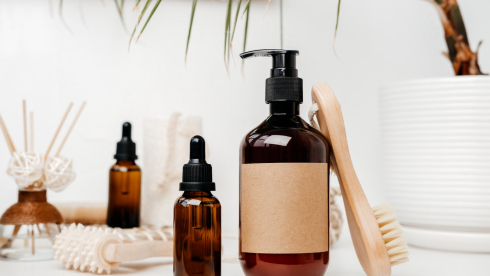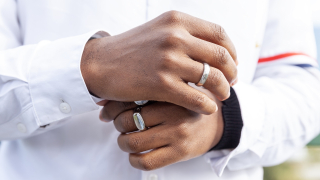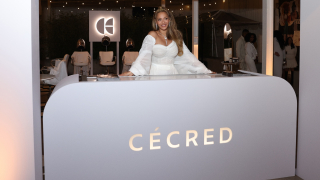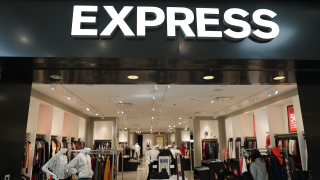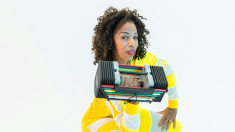As all natural hair becomes normalized, let’s celebrate the kinks and the curls alike to kill the unhealthy hair hierarchy. Not all black hair is curly or wavy.
Walk down the aisles of any beauty supply store, scroll through the Twitter and Instagram feed, the Facebook pages, and blogs dedicated to natural hair and it won’t take long to notice a particular schism among this “community” that claims to celebrate Black hair. It seems that a certain natural texture gets a lot more love than others.
In the 1970’s, the Afro reigned supreme. You could see ads, TV shows, and movies showcasing the lustrous kink of highly textured hair. Somewhere in the late ‘80s, naturals became taboo, giving way to relaxers and drippy texturizers. Alas, the new millennium brought back our passion for natural hair with a roar—and a lot more curl. So, what happened to all that kink?
This current advent of Black women embracing their natural hair—-and companies quick to pounce on the marketing value of this trend—-has been accompanied by messaging that suggests that healthy natural hair equates to thick, shiny curls. Many women are empowered to go natural seeing the myriad of products that promise the perfectly defined twist out; the leave-in that gives your hair so much shine it has it’s own aura; and that through the powers of olive, coconut, and grapeseed oil, their curls will be whipping in the wind with the perfect bounce. It’s a false reality that leads many into quick frustrations wondering why their hair won’t curl like all those girls on Instagram.
The notion of “all curl everything” is so widely propagated throughout this natural hair movement—often leaves out our kinkier, and dare-I-say more common hair textures.
There’s a meme floating around that perfectly illustrates this phenomenon: “Tell people hair is natural still gets asked…but how do you make it curly?” How many natural sisters are attempting to get a look that is as foreign to their scalp as bone straight hair? And what does our fixation with curls say about us as a people?
When I was a sophomore in college, I went through some of this myself. I had shaved my head (for the second time) because my golden blonde highlights had ripped my hair of any texture. And for all my time spent on the natural hair forums of the early 2000s, I couldn’t seem to get my edges to slick back, my ‘baby hair’ to slick down or my hair to naturally form into curls after co-washing. So I went up to my classmate Abby, who always had the perfect crop of small curls, her puff glided into slight waves when she gelled it up- and asked her “How do you get your hair to curl like that?” My exact words. She laughed, as did the other girls who were standing around, and dismissed me with a quick, “It’s my hair, from my scalp.” She wasn’t being mean and though I felt a bit stupid for being so clueless, I didn’t take offense, but I did go get a weave to forget about the frustrations I was experiencing because I really thought that healthy hair equaled curly hair. I know my experience is not uncommon. Many of us simply lack of awareness in the diversity of natural hair textures.
Some years later, I went on to start a YouTube channel to review weave in hopes of getting free hair. The free hair didn’t come fast enough and financial constraints forced me to deal with my real hair. By this time, it was 2009 and there was a lot more educational info about natural hair on the internet to help me through my journey. However, curly hair was still being pushed as the model of healthy natural hair, to the point of some natural hair product lines offering chemical treatments to loosen your curl pattern into a “wash & go” texture. My landlord saw my real hair and immediately urged me to look into one of these treatments, because that’s what she had been doing for the past two years and she felt it was the only way for her to maintain her natural hair. Something about putting a chemical in my hair to loosen the curl just sounded too much like a texturizer, and I had already had a very bad experience with that.
It was at this time that “hair typing” became a buzzing topic and when KimmayTube did a video breaking down the hair typing system, I had a major “Ah ha” moment. No one had ever said to me that it was okay for my hair to be seen tightly coiled without a curl in sight. Every time I sat down in a salon chair, there were countless remarks about how nappy and coarse my hair was and about how much work it was going to take to make it look presentable. But here was this hair typing system that said my hair was right around the 4B/4C area and that I needed to be using the proper styling tools and products to keep my beautiful, Black, natural hair looking good. I could achieve curled styles, but not curly hair…and that’s fine.
When I eventually started doing YouTube tutorials on 4C natural hair, I didn’t feel like part of the natural hair community because I rarely saw anything close to the representation of my hair texture. Tides have definitely turned as my audience has grown, and others have cultivated loyal followings by celebrating kinkier hair textures. But even as the blogs push out more content that celebrates coils and kinks, you can still scroll go on Instagram and see curly hair largely being represented as the cremé de la cremé of the natural hair movement. My puff without the baby hairs or a French braid sans silky texture doesn’t garner the same excitement as many of those images of bouncing curls that are touted as natural hair inspiration. There’s a host of women with textures similar to mine that opt to be ‘natural under their weave’ because mainstream aesthetics still don’t include us. Women are still walking the beauty aisles of their local drug stores and picking up the newest gel or curling custard, hoping for the perfect spiral to bounce from their scalp, and still asking others “How did you get your hair to curl like that,” without knowing that it isn’t something they can or should aspire to achieve.
As natural becomes the norm, let us celebrate the kinks and the curls alike as beautiful and kill this unhealthy hair hierarchy.
Jouelzy is a Black Hair Care vlogger who covers (4C) natural hair, wigs and weaves through her detailed YouTube videos.





